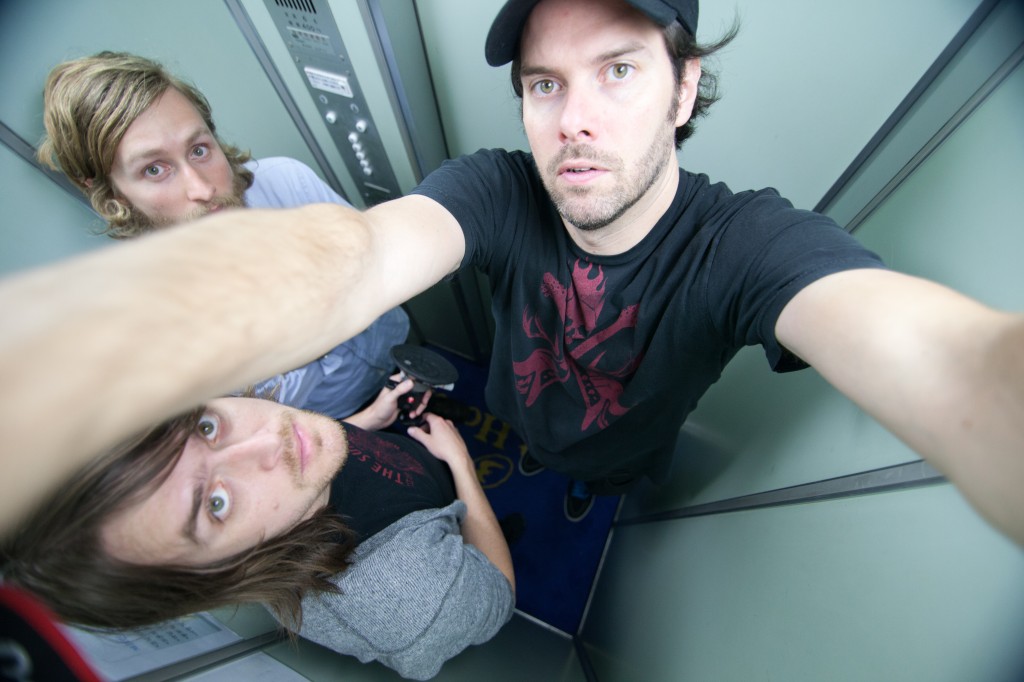Behind the Scenes with Director John Jeffcoat
Where did the idea for big in Japan come from?
I was working on a documentary project called “$5 Cover” for MTV, shooting behind the scenes footage of Seattle bands following on the heels of developing my first feature, OUTSOURCED, into a half-hour comedy for NBC with my co-writer George Wing. Between a writer’s strike and a shuffling of executives at NBC, it was a very drawn out process, which kept me away from film production for several few years. I was dying to get my hands back on a camera and into production on a feature.
Jane Charles, the Producer of $5Cover introduced me to the band Tennis Pro who pitched us the idea of documenting a trip to Japan in search of an audience for their music. I hit it off with Tennis Pro and we decided to launch a kickstarter campaign to get things started. There was no script, no actors and no money.
With $5 Cover I was essentially working solo with a Canon 5D Mark II, shooting, recording the audio and editing. I loved the intimacy and flexibility this guerilla style filmmaking offered and realized how easy it was to keep the band comfortable with limited gear- not to mention the incredible images I was able to capture on the DSLR.
While filming a band called the Maldives, I met Ryan McMackin, their drummer who also happened to be a cameraman with a 5D and Adam Powers, a sound mixer, who became the character Mans in BIG IN JAPAN. The idea was to take the style we started with the MTV docs and bring it to the fictional narrative world. The gear we’d use would be the gear we could fit in our backpacks. We would be a trio shooting a trio.
How did you get the film made?
BIG IN JAPAN had three phases to the production. Phase 1 was shooting the live performances in Tokyo, meeting and casting other bands, location scouting and experimenting with possible scenes. We launched a successful Kickstarter campaign coupled with airline mile donations afforded us the opportunity to get the band, Alex (who plays their manager), myself, and two other crew members to Tokyo where the band would perform 9 shows over 15 days. I had sketched out a rough outline as to what could possibly happen off the stage and we recorded a few scenes but left room for improvisation.
Phase 2 was a shoot in Seattle to establish the storyline that we developed while on location in Tokyo. We filmed a few scenes and cut together an effective and compelling teaser trailer but it was clear we needed a proper budget and a shooting script. We brought on producer Jannat Gargi to collaborate with and to help secure financing. We workshopped scenes with the band before returning to Japan to complete production.
Phase 3 was our final trip to Japan to shoot the entire narrative scripted portion of the film. Between Phase 1 and 2, the band had actually returned to Tokyo to do another mini tour just after the big earthquake in 2012. When they returned there were still aftershocks happening nearly every day and most have the tourists had left. The band returned with a number of stories, which we decided to weave into the storyline.
What was it like working with non-actors?
Working with non-actors was an added challenge of shooting a feature film internationally on a small budget with a tiny crew. The band had no formal training as actors and with some workshops, improvisation and ultimately a full-length script, it’s amazing how their abilities to perform in front of the camera evolved. This required me to gain the trust of the band and have them willing to put themselves in very vulnerable situations. At first this meant a lot of liquid courage courtesy of Suntory whiskey, but eventually there was a trust that developed and once the band was able to view edited scenes, they became far more confident with their acting and we started to find our groove.
Had you been to Japan before?
No, this was our first time to Japan with the exception of Alex who moved to Japan after his band Green River had broken up- just like in the movie.
We fell in love with the people who are gracious and hospitable and the camaraderie between the bands that played the basement bars was fantastic. They embraced Tennis Pro immediately and deep friendships and bonds were established early on.
We were fortunate to have a small crew, which was essential to our ability to move from location to location quickly with all our gear- dragging it through subways and taxis. One of our challenges was that very few people spoke English, but we were fortunate to work with a fabulous Coorinator, Mayuko Otusbo, who eventually became our Co- Producer.

